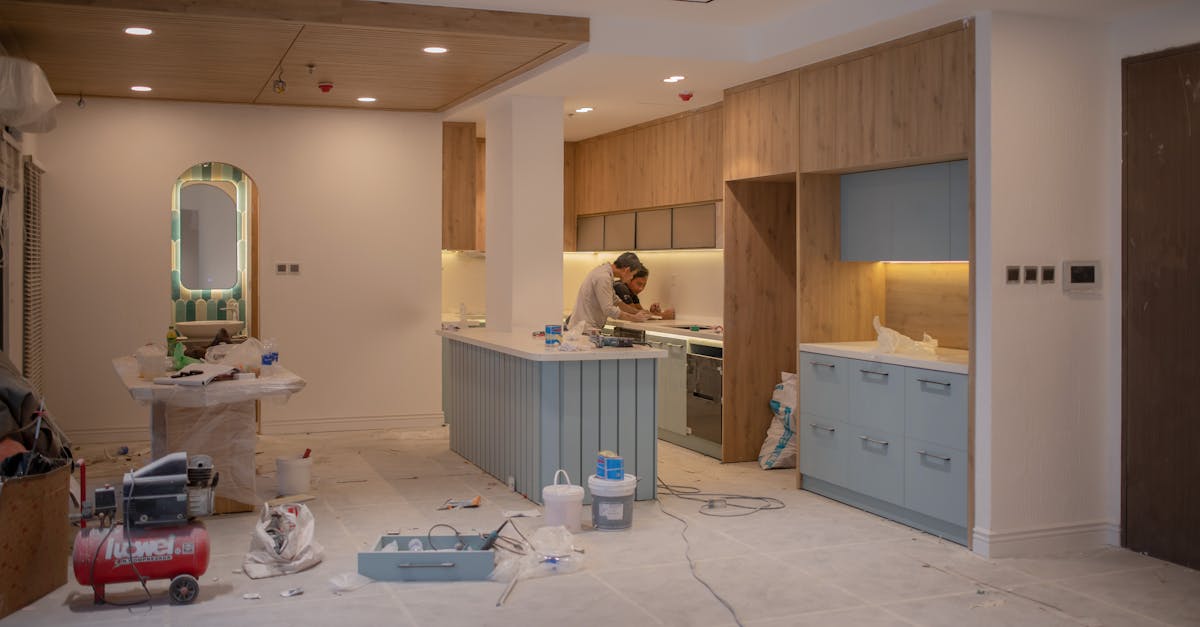Upgrading recessed lighting is like giving your home a stylish haircut—suddenly everything looks fresher and more put together. Imagine stepping into a room where the lighting sets the mood just right, making your space feel cozy and inviting. Whether it’s hosting friends or just enjoying a quiet evening, the right lighting can transform any experience.
But let’s be honest, not all recessed lighting is created equal. Old fixtures can feel like that outdated sweater hiding in the back of your closet—it’s time to let them go! With modern designs and energy-efficient options, upgrading your recessed lighting not only brightens your home but also brightens your wallet in the long run. So, why not shine a light on this simple yet impactful upgrade?
Table of Contents
ToggleWhat Is Recessed Lighting?
Recessed lighting refers to fixtures mounted within the ceiling, providing an unobtrusive lighting solution. This design creates a sleek, modern look, enhancing the overall aesthetic of spaces.
Definition and Purpose
Recessed lighting consists of light fixtures installed into the ceiling cavity. This installation allows the lights to be hidden from view while illuminating the area below. The primary purpose involves delivering ambient light, accentuating artwork or architectural features. It can also serve as task lighting for specific activities, fostering a versatile lighting environment.
Types of Recessed Lighting
Several types of recessed lighting exist, each catering to different needs. Adjustable fixtures allow for directional lighting, ideal for accentuating particular areas. New construction lights fit into ceilings that are not yet finished, simplifying installation. Retrofit lights accommodate already finished ceilings, enabling easy upgrades. IC-rated fixtures ensure safety and insulation compatibility when used in ceilings. Understanding these options helps homeowners select the best fit for their lighting upgrade.
Benefits of Recessed Lighting Upgrade
Upgrading to recessed lighting provides numerous advantages for any home. It not only enhances the visual appeal but also contributes to functionality and value.
Enhanced Aesthetics
Modern recessed lighting fixtures create a seamless design in any room. Homeowners appreciate how these fixtures blend into ceilings, minimizing visual clutter. The variety of styles available allows for customization, catering to individual tastes. Fixtures can highlight architectural features or artwork, transforming ordinary spaces into focal points. Sleek lines and subtle illumination promote an inviting atmosphere, making gatherings more enjoyable.
Improved Energy Efficiency
Energy-efficient recessed lighting significantly reduces electricity consumption. LED options utilize less power, leading to lower utility bills. These fixtures typically last much longer than traditional incandescent bulbs, decreasing replacement frequency and waste. The upgrade also qualifies many homeowners for energy rebates, furthering long-term savings. Choosing the right fixtures aids in maintaining consistent light output while minimizing energy usage.
Increased Property Value
Upgrading recessed lighting elevates the overall property value. Prospective buyers recognize the appeal of modern, efficient lighting systems. Well-lit spaces create an inviting ambiance, enhancing first impressions during showings. Homes with updated lighting designs often stand out in a competitive market. Investing in recessed lighting can yield substantial returns, making it a wise choice for future homeowners.
Considerations Before Upgrading
Evaluating key factors ensures a successful recessed lighting upgrade. This section outlines important considerations for this home improvement project.
Ceiling Height and Structure
Ceiling height significantly influences recessed lighting choices. Lower ceilings may require shallow fixtures to prevent light from being obstructive. Additionally, structural elements such as beams or ducts can affect placement. Measuring the space beforehand helps identify optimal locations for fixtures. Ensuring proper clearance and avoiding obstruction enhances both functionality and aesthetics.
Lighting Technology and Options
Selecting the right lighting technology matters for energy efficiency and brightness. LED options dominate the market due to their low energy consumption and long lifespan. Designers should consider dimmable fixtures that allow users to adjust light levels for different activities. Including adjustable fixtures enables directional lighting, making them suitable for artwork or architectural features. Evaluating color temperature also plays a role, as warmer tones create a cozy atmosphere, while cooler tones provide a more vibrant feel.
Cost and Budget Planning
Budget planning is essential for any lighting upgrade project. Factors like the number of fixtures, types of finishes, and installation costs directly impact overall expenses. On average, homeowners can expect to pay between $125 and $300 per fixture, including installation. Exploring rebates and energy incentives can significantly reduce costs, making it a financially viable option. Prioritizing a clear budget ensures informed decisions that align with lighting needs.
Installation Process
Installing recessed lighting can enhance the aesthetic appeal of any room. Homeowners often consider various methods for installation, which can impact the final look and functionality.
DIY vs. Professional Installation
Deciding between DIY and professional installation depends on comfort and skill levels. DIY installations can save costs and provide a sense of accomplishment. Many homeowners enjoy the challenge and the opportunity to customize their lighting setup. However, professional installation may be necessary when dealing with complex electrical systems or structural considerations. Hiring a qualified electrician ensures compliance with local codes and can prevent potential hazards. Weighing the pros and cons of each option allows homeowners to make an informed choice that suits their needs and expertise.
Step-by-Step Guide for DIYers
Planning the project begins with gathering tools and materials. Essential items include a voltage tester, wire strippers, electrical tape, and the chosen recessed lights. First, turn off the power at the circuit breaker before starting any work. Next, mark the desired locations on the ceiling to ensure proper spacing. Carefully cut holes using a drywall saw, ensuring they fit the light fixtures. After that, connect the wiring, following the manufacturer’s instructions and securing with wire nuts. Finally, attach the fixtures, restore power, and test the lights to confirm they function correctly. With attention to detail, DIY enthusiasts can achieve a professional-looking installation.
Conclusion
Upgrading recessed lighting offers a transformative impact on any home. It enhances the visual appeal while creating a warm and inviting atmosphere. Homeowners can enjoy the benefits of energy efficiency and increased property value through modern designs.
Choosing the right fixtures and planning for installation can make all the difference. With options like LED lights and adjustable fixtures, customization is easier than ever. Whether opting for a DIY approach or seeking professional help, this upgrade is a worthwhile investment. Embracing modern recessed lighting elevates spaces and brings lasting benefits that go beyond aesthetics.





